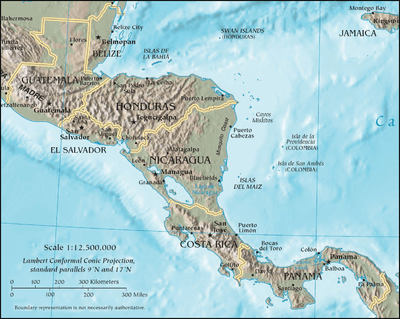Corporate Air Services HPF821
 A Fairchild C-123 owned by the U.S. Coast Guard, photographed in 1971 | |
| Incident summary | |
|---|---|
| Date | 5 October 1986 |
| Summary | Shoot-down |
| Site | near San Carlos, Río San Juan, Nicaragua |
| Passengers | 0 |
| Crew | 4 |
| Fatalities | 3 |
| Injuries (non-fatal) | 0 |
| Survivors | 1 |
| Aircraft type | Fairchild C-123K |
| Operator | Corporate Air Services, owned by Southern Air Transport |
| Registration | HPF821 (previously N4410F), ex-USAF 54-679 (c/n 20128) |
| Flight origin | Ilopango International Airport, El Salvador |
| Destination | Ilopango International Airport, El Salvador |
Corporate Air Services HPF821 was a transport aircraft delivering weapons via airdrop to the Nicaraguan Contras which was shot down over Nicaragua on 5 October 1986 by a surface-to-air missile. Two U.S. pilots and a Nicaraguan radio operator died when the Fairchild C-123 Provider was shot down by a Sandinista soldier using an SA-7 shoulder-launched missile, while Eugene Hasenfus, the U.S. "kicker" responsible for pushing the cargo out of the aircraft, survived by parachuting to safety. The aircraft was carrying "60 collapsible AK-47 rifles, 50,000 AK-47 rifle cartridges, several dozen RPG-7 grenade launchers and 150 pairs of jungle boots".[1]
Hasenfus was captured within 24 hours, and sentenced by a Nicaraguan court to 30 years in prison; at the request of Senator Chris Dodd and others, he was released in exchange for Sandinista soldiers captured by the Contras.[1] Hasenfus's comments about CIA backing for the flights were initially denied by the U.S. government,[2] but investigations of what became known as the Iran-Contra affair showed that the U.S. had organized this and other flights, and had funded the cargo using illegal weapons sales to Iran.
Background
HPF821 was operated by Corporate Air Services, a front for Southern Air Transport, the registered owner of the aircraft.[3] Some of the pilots and crew involved with the Contra supply flights, including Eugene Hasenfus, had been involved in the CIA's aerial supply activities during the Vietnam War, using Air America, Southern Air Transport, and other CIA proprietary airlines. Two Cuban-Americans involved in organising the flights were known to Hasenfus as "Max Gómez" (actually Félix Rodríguez) and "Ramón Medina" (actually Luis Posada Carriles).[3]
Incident

HPF821 departed from Ilopango International Airport, El Salvador, carrying a cargo of "60 collapsible AK-47 rifles, 50,000 AK-47 rifle cartridges, several dozen RPG-7 grenade launchers and 150 pairs of jungle boots".[1] The aircraft flew along the western coast of Nicaragua to Costa Rica, entering Costa Rica from the northwest. Here, it turned and headed for Nicaragua.[3] After entering Nicaraguan airspace near the border with Costa Rica, the aircraft was maneuvering down towards 2,500 feet in preparation for dropping off its cargo, when it was targeted by a Sandinista SA-7 surface-to-air missile. It crashed near San Carlos, Río San Juan, killing three of its four crew; the fourth, Eugene Hasenfus, had parachuted to safety, but was captured within 24 hours.[4]
Aftermath
Hasenfus was captured within 24 hours, and confessed to smuggling weapons.[5] He was sentenced by a Nicaraguan court to 30 years in prison. At the request of Senator Chris Dodd and others investigating the Iran-Contra affair, he was released in exchange for Sandinista soldiers captured by the Contras.[1] Hasenfus was pardoned and released on 17 December, and returned to the U.S. with Dodd, in what Nicaraguan President Daniel Ortega described as a "gesture of peace by the people of Nicaragua".[5]
Logbooks retrieved from the wreckage of the aircraft listed various flights with Southern Air Transport personnel.[6]
References
- 1 2 3 4 Timothy Lange, Daily Kos, 27 December 2009, Blast from the Past. Gene Hasenfus: December 1986
- ↑ Paul Goepfert, Chicago Tribune, 10 October 1986, Captive American Links Cia, Plane
- 1 2 3 Envío, Hasenfus: Nothing But the Fact, No. 65, November 1986
- ↑ http://aviation-safety.net/database/record.php?id=19861005-0
- 1 2 Stephen Kinzer, New York Times, 18 December 1986, HASENFUS IS FREED BY NICARAGUANS AND HEADS HOME
- ↑ Frank Greve, Philadelphia Inquirer, 18 October 1986, Logbooks Tie Contras, Fla. Airline Plane's Wreckage Yielded Pilot's Files